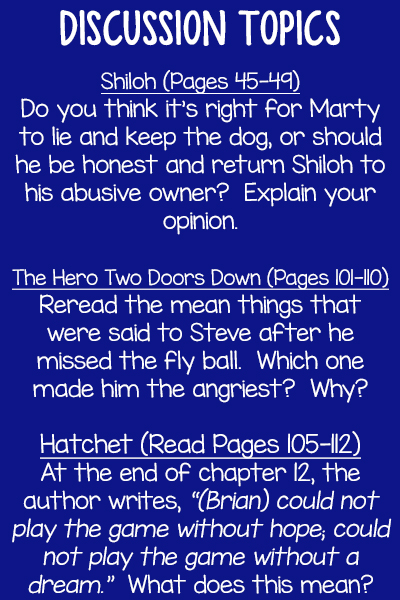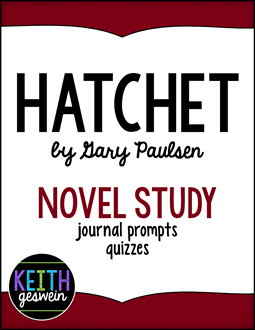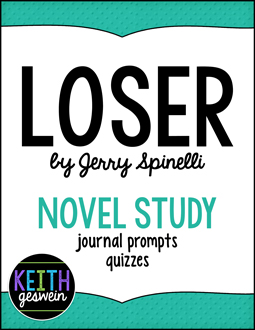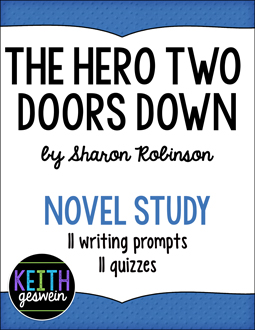
“Did you say boring work or morning work?”
I asked a student this question early in my teaching career. He wanted to know where to turn in his morning work. I could have sworn he said “boring work.” The normally respectful student answered “morning work” and I told him where to turn it in.
I had the following goals for morning work during my first few years of teaching:
- Make it routine so I don’t have to answer questions while I collect homework.
- Make it something that will get the kids quiet.
- Make it a worksheet because I can easily prepare it.
My students were given a math review worksheet when they entered my classroom. It met my goals every day. It kept the kids quiet. The questions were simple review problems that most students could easily complete. It gave me time to quickly check homework and take attendance…
…and it was DEFINITELY “boring work.” So I added the following to my list of goals for morning work:
Make it engaging.
I had been wanting to increase the number of novels my students read. So I decided to incorporate them into my morning work. I went to my board after school and wrote, “Morning Work: Read pages 1-10 of Loser.”
Hmmmm, that was not any more engaging than my math worksheets. And how was I going to get 25 copies of the book?
I spent a few days pondering how to make this work, but couldn’t think of an idea that was practical. Then I saw a student dozing off while completing his “boring work” math worksheet. This student LOVED talking. Then I realized the solution.
Have kids read 5-10 pages with a partner and give them a discussion topic each morning.
I put students in groups of 2 or 3 based on their reading level. I wrote the book title and pages they needed to read during the first 15 minutes of the day. All I had to do was change the page numbers each day.

The day’s discussion question for each group was displayed on the projector. All I had to do was type a question from the book’s novel study for that chapter (see links at the end).

Before students started reading, they had to leave their homework assignment on their desk. I collected homework while they read, marking who had completed homework and who had not.
After time was up, I randomly called on one or two students for each book to tell me what they discussed. Then we began our day.
Discussing quality literature was more beneficial to students than quietly completing a math worksheet. It’s difficult to explain, but it seemed like my students’ brains were flipped to “learn” instead of “zoned out” when our first subject started. Some of my fifth-grade students fell asleep less often during the morning.
This new system was never perfect. It required some tinkering every now and then, but the student engagement made the work worth my time. Here are a few pointers to help this system run well in your room.
Tip #1: Use Novels That Are A Bit Lower Than The Students’ Reading Level
I usually used three or four novels at a time. I wanted each book to be a bit lower than each of my fifth graders’ reading level. I did not want this to be a frustrating reading experience. But if a student ran into problems, that’s where reading with a partner could help.
Tip #2: Use Novels That Students Can Finish In 3-4 Weeks
When I first started this, I made the mistake of assigning Hoot to a few groups of students. Since Hoot is 292 pages, and kids could only make it through about 8 pages each morning, this took forever to finish. Kids lost interest if their book took more than a month to finish. Books like Loser, The Hero Two Doors Down, Shiloh, Hatchet, and Inside Out & Back Again were perfect lengths. Some of your groups will be able to read more or less each day, so that affects which books you can assign. Use your judgment. Just try to avoid having a group read one book for more than 3-4 weeks.
Tip #3: Ask Your Librarian For Copies
Librarians are rock stars. A few weeks before I needed a new set of books, I asked my librarian to ask for copies from other libraries in our district. This usually provided enough copies for every student. If kids have the book on their Kindle, I got parental permission for students to bring the Kindle to school.
Tip #4: Be Ready For These Books To Be In Demand
Some students will want to read the book their classmates are reading. When I had a few groups read Loser during morning work, they laughed at several events in the book. Other students saw this. Then they asked to read Loser on their own. This became a perfect way to promote reading.
Tip #5: Make This A Reading Participation Grade
I created one assignment in my grade book called “Morning Work Participation.” Everyone started the grading period with a 100%. If a student refused to read, I took 5 points off the grade. If a student refused to respond to the discussion question when called upon, I took off 5 points. With all the difficult reading tests kids are graded on, I liked to have at least one or two assignments like this where they could earn a 100% as long as they gave an honest effort every day. It also provided the perfect amount of accountability.
Tip #6: Don’t Rush An Occasional Extended Discussion
Did you notice the topic for Shiloh above? Students had to think about whether the main character should lie to his parents about keeping a stray dog or be honest and return the dog to an abusive owner. Students had strong opinions on this. Even kids who weren’t reading Shiloh chimed in. ELA class started about 10 minutes later that day because my students wanted to discuss this. There was no way I was saying, “Sorry class, we have to stop this discussion so we can begin Language Arts on time.” If your students are wanting to spend 40 minutes discussing books every day, that’s a different story. But you should certainly allow time for the occasional extended discussion.
Need Discussion Ideas?
If you’d like discussion ideas, I have created novel studies for over 40 books. My writing prompts and quiz questions make perfect discussion topics for morning work. You can download the first novel study for free!
Don’t see a novel study for a book you love? Click here to browse over 40 novel studies I have created.





